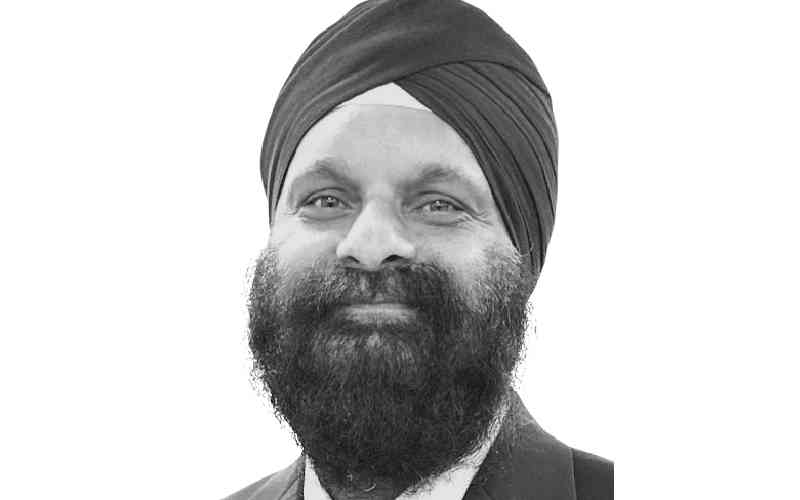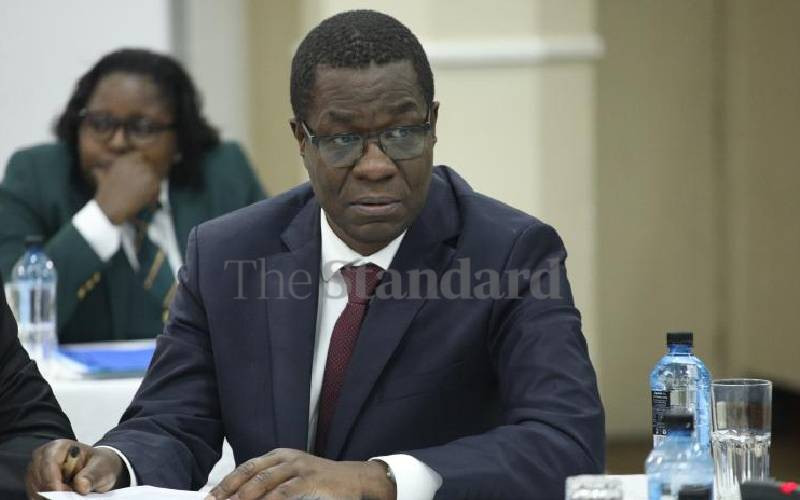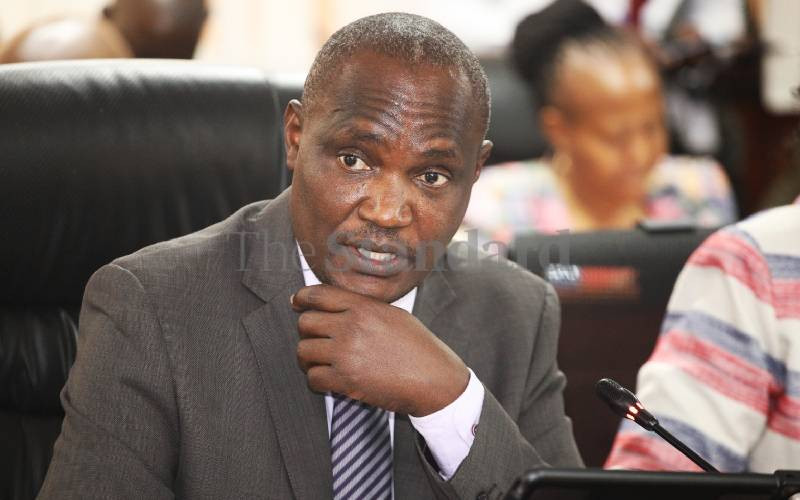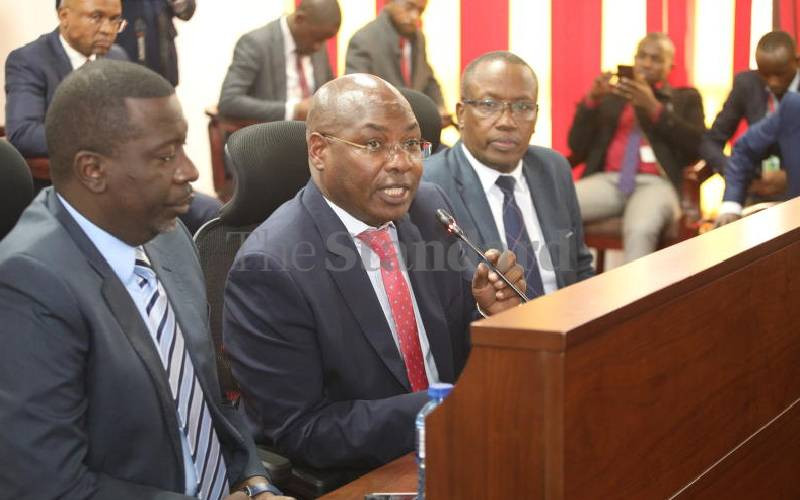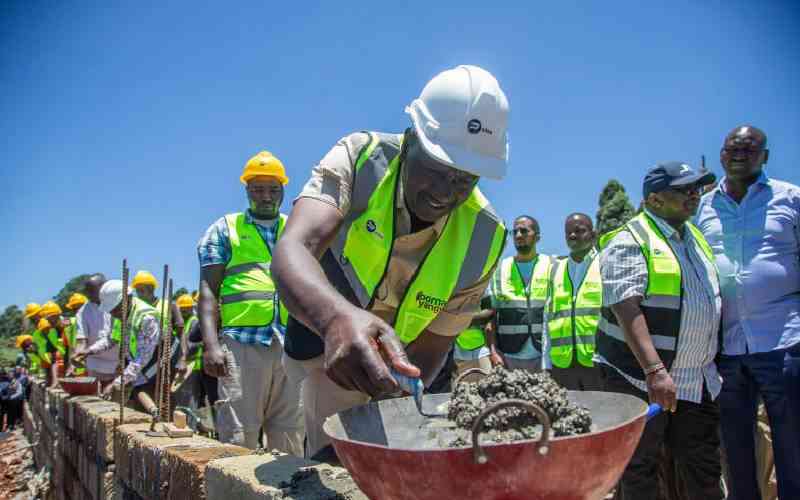By AMOS KAREITHI
From his final resting place near the gnarled Mulianduli (Olea ueroea) tree perched atop the controversial mountain, the spirits of the adventure loving restless lord roam freely.
The spirits hover over the descendants of the master’s servants, perhaps to ensure his numerous secrets are safe within his “palace” and kingdom. The Knights Templar Chandelier prominently hanging in the lounge attest he was undoubtedly a member of secret societies and hosted the initiated in the secret room in his house, just above the cells where those who crossed him were confined.
William Northtrup McMillan, the philanthropic American millionaire who migrated to Kenya, when life was at its crudest in 1904, was a mysterious man, whose imprints still remain, more than 100 years later.
Although the man Wakamba nicknamed Mukola has been gone for 87 years, intrigued scholars are still mulling over his motivations of naming the hill that was in the middle of his 40,000-acre empire Ol Donyo Sabuk. There is no doubt that for hundreds of years before McMillan came to East Africa, the mountain was in existence and was referred to by the locals as the hill of nzabi (pigeon peas). But for unexplained reasons he chose to refer to it by a different name.
Astronomer Thomas Mwangi, who has extensively researched on McMillan, believes that he deliberately chose the name to confuse people and hide the real location of his headquarters. He contends that McMillan came to the area accompanied by his personal geologists.
He was on a mission to identify the natural resources of the area as it was evidently endowed in rare earth minerals. Judy Aldrick in her book, Northrup: The life of William Northrup McMillan renders some credence to this theory and exposes his links with the Loyal Geographical Society. It is evident from the professions of some of his members of staff that McMillan was not just a hunter in pursuit of great kills.
Dr Charles Singer, for example, was a trained zoologist and medical officer while Burchat Heinrich Jessen was an engineer and cartographer. Although by the time McMillan arrived in the country Ol Donyo Sabuk had already been owned by about five or six Europeans, he appeared irresistibly drawn to it and was so excited that he abandoned all plans of exploring Egypt and River Nile, which was an obsession then.
Judy Aldrick describes it as a lump shaped mountain covered with grass whose top had dense forest that were frequented by buffaloes. This uninspiring mountain whose beauty could not rival the snow peaks of Mt Kilimanjaro or Mt Kenya, arrested McMillan’s imagination so much so that he abandoned his expedition and persuaded the other Europeans who owned Ol Donyo Sabuk to sell it to him.
Ground rent
Although he would later acquire huge tracts of land around the area and as far as Nairobi, he chose to establish his headquarters at the foothills of his beloved mountain. His estate was so big that there was a railway line within it that ferried various agricultural products such as sisal from the farm to the factory.
For all his estate, McMillan was supposed to pay a ground rent of half a pence per acre for 99 years where he constructed his palace. Dr Kibe Kiragu of Institute of Gender and African Studies, University of Nairobi, also believes that Ol Donyo Sabuk was more than just a tourist attraction to McMillan, who was a very influential person at the time.
Peter Muthike says although no major mineral exploration has been done in the area, local residents believe there are very many minerals and have fascinating tales of numerous mythical beasts that when offered sacrificed yields of pure gold.
Thomas Mwangi explains that samples of some of rocks taken from the area indicated there was presence of rare earth minerals that are used for laser beam technology and for making some of the components for airplanes.
When samples of ashes collected from Ol Donyo Sabuk for tests by the Institute of Nuclear Science and Technology of the University of Nairobi on May 21 this year, the results confirmed presence of titanium, yttrium, zirconium, rubidium gallium and Niobium among other rare earth minerals.
Stay informed. Subscribe to our newsletter
“The presence of these rare minerals has been a closely guarded secret and is one of the main reasons that persuaded the American millionaire who was knighted by the British loyal family to abandon his empire in St Louis to reside in Ol Donyo Sabuk,” Mwangi explains.
According to Mwangi, McMillan played a pivotal role in crafting the laws governing the prospecting of minerals that have ensured that although the meek Kenyans have reclaimed their ancestral land, they have no mineral rights.
When the colonial Government was crafting the mining Act and its subsidiary legislation (Chapter 306 of the Laws of Kenya), it ensured the ignorant local people might inherit the earth where they eked out a living but would never own the mineral rights.
Interests protected
They were forever blocked from exploiting the natural resources through a clause stipulating that, “a knowledge and understanding are essential before prospecting rights can be issued to an individual or a group.” The law also required that all minerals that had not been extracted before December 12, 1964 be vested with the Government of Kenya. By the same stroke all prospecting licenses issued before then would remain in force.
With the passing of such laws, McMillan and other influential colonialists could rest easy that their interests were protected and would remain so for many years to come.
The theory that this great hunter who rarely ventured away from his estate owing to his enormous body was more than an ordinary mortal is attested by the architecture of his palace that had facilities rivaling a Government institution.From a casual glance, the towering bungalow looks like a school building with many faces.
But a closer inspection tells a different story as there were king size bedrooms fit for presidents and royals as well as cells for common law breakers and war criminals who challenged her majesty’s Government during the First World War.
Peter Muoki Kyungu, who is the administration manager of the McMillan House, reels off the names of the rich and the famous that have through out the course of history sought the comfort of the castle.
They include Theodore Roosevelt, former American President who came to Juja estate with a group of 500 porters and personal attendants, War time British Prime Minister, Winston Churchill and Colonial Governor Evelyn Barring.
Underneath these spacious and well-aired bedrooms are dusty dungeons where the enemies of the crown and the colonial Government were confined in total darkness, day and night.One of the famous prisoners is the Italian commander of East Africa force; Duke Amadeo Overosta after the British defeated the Italians during the World War. The cells constructed in the bunker are suffocating and one can only sense the desperation of prisoners confined there for any length of time as the champagne-swilling aristocrats made merry above the floor.
Cannon fodder
During the Second World War, the compound of the McMillan castle held another kind of terror to thousands of natives who were frog marched there to be conscripted in to the British fighting forces as porters. “These spear wielding natives were cannon fodder for the German artilleries during the war.
They were untrained in combat and had no weapons and ended up being killed or maimed. It is a miracle that some came back from the battle fields,” Muthike explains. He adds that since McMillan was instrumental in the recruitment of soldiers during the World War, his home was put at the disposal of the colonial Government. McMillan proudly wrote letters to friends in America and Britain about how he contributed to the war by turning some of his houses into hospitals. Life has become a vicious circle for McMillan’s home that started off as a world-class tourist resort. Although the 33,000 acres estate is now the property of Muka Mukuu Co-operative Society, the McMillan home is poised to regain its name globally.
It has been rehabilitated and the Nairobi Metropolitan ministry is in the process of setting up a Bomas 11 resort at the McMillan Castle. The resort will see cable car ferry tourists from a giant Mugumo (fig) tree outside the castle, up to Ol Donyo Sabuk to McMillan’s grave and back. Muka Mukuu chairman, Dr Fredrick Karanja believes that once the project is completed, the dream that McMillan had more than 100 years when he hosted Roosevelt will become a reality. Perhaps the sleeping giant will then yield some of his secrets about the hill.
[email protected]
 The Standard Group Plc is a
multi-media organization with investments in media platforms spanning newspaper
print operations, television, radio broadcasting, digital and online services. The
Standard Group is recognized as a leading multi-media house in Kenya with a key
influence in matters of national and international interest.
The Standard Group Plc is a
multi-media organization with investments in media platforms spanning newspaper
print operations, television, radio broadcasting, digital and online services. The
Standard Group is recognized as a leading multi-media house in Kenya with a key
influence in matters of national and international interest.
 The Standard Group Plc is a
multi-media organization with investments in media platforms spanning newspaper
print operations, television, radio broadcasting, digital and online services. The
Standard Group is recognized as a leading multi-media house in Kenya with a key
influence in matters of national and international interest.
The Standard Group Plc is a
multi-media organization with investments in media platforms spanning newspaper
print operations, television, radio broadcasting, digital and online services. The
Standard Group is recognized as a leading multi-media house in Kenya with a key
influence in matters of national and international interest.

